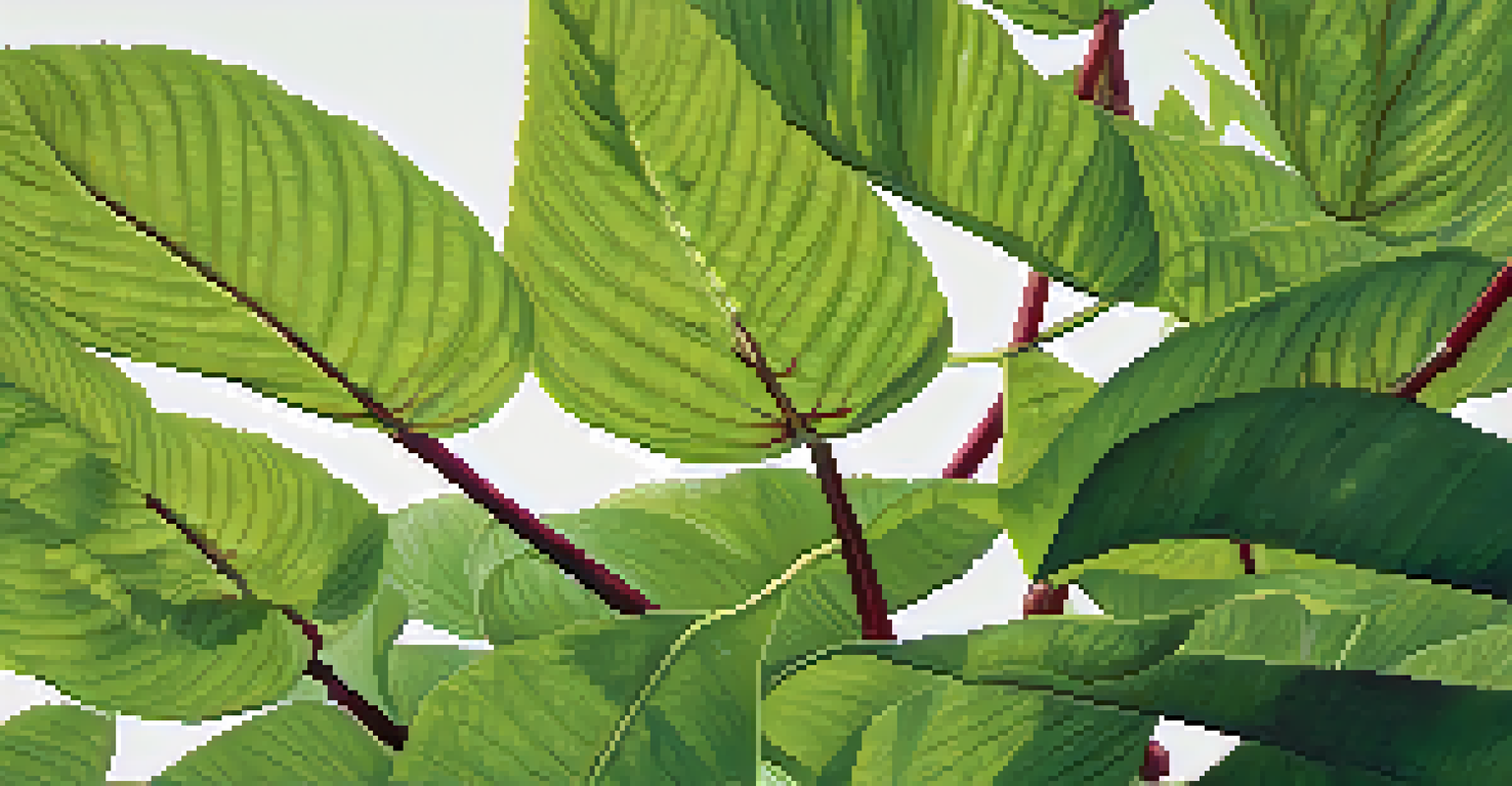The Role of Invasive Plant Species in Ecosystem Disruption

What Are Invasive Plant Species?
Invasive plant species are non-native plants that spread aggressively in new environments. Unlike native plants, which have co-evolved with local ecosystems, invasive species often lack natural predators, allowing them to flourish unchecked. This unchecked growth can disrupt the balance of local flora and fauna, leading to significant ecological changes.
Invasive species are a significant threat to biodiversity and our ecosystems, and the cost to manage them continues to rise.
For instance, the kudzu vine, originally introduced for erosion control, now blankets large areas of the Southeastern United States. This rapid growth chokes out native plants, resulting in a loss of biodiversity. As these invasive species thrive, they can alter the habitats that many local organisms depend on.
Understanding what makes a plant invasive is crucial for addressing their impact. Factors like their ability to reproduce quickly, disperse over large areas, and adapt to various conditions contribute to their success in non-native ecosystems.
How Do Invasive Plants Disrupt Ecosystems?
Invasive plants disrupt ecosystems primarily by outcompeting native species for resources such as light, water, and nutrients. This competition can lead to the decline or even extinction of local plants, which are often adapted to specific conditions. The decline of native species can ripple through the ecosystem, affecting herbivores, pollinators, and other animals that rely on them.

Take the example of the purple loosestrife, which has invaded wetlands across North America. This plant can grow in dense stands, reducing the habitat available for native aquatic plants and the wildlife that depends on them. The loss of these native species can significantly alter the structure and function of the ecosystem.
Invasive Plants Threaten Ecosystems
Invasive plant species outcompete native plants for resources, leading to ecological imbalances and declines in biodiversity.
Moreover, invasive plants can also change soil chemistry and hydrology. For instance, some invasive species may alter nutrient cycling or water availability, further hindering the growth of native plants and disrupting the entire ecosystem's balance.
The Economic Costs of Invasive Plants
Invasive plant species don't just threaten ecosystems; they also have significant economic impacts. The costs associated with managing these species, such as removal efforts and restoration projects, can be substantial. According to estimates, invasive species cost the U.S. economy billions of dollars each year.
The greatest threat to our planet is the belief that someone else will save it.
For example, the cost of managing invasive plants like Japanese knotweed, which damages infrastructure and property, can run into the thousands for homeowners. Local governments often need to allocate funds for control measures, diverting resources from other important community projects.
Additionally, invasive plants can affect industries such as agriculture and forestry by reducing crop yields and compromising the quality of timber. This economic burden illustrates the far-reaching consequences of allowing invasive species to establish themselves in new environments.
The Role of Climate Change in Invasive Plant Spread
Climate change plays a significant role in the spread of invasive plant species. As temperatures rise and weather patterns shift, some invasive species may find new areas to thrive. This means that regions previously inhospitable to certain invasive plants may now become suitable for their growth.
For instance, warmer temperatures can extend the growing season for invasive species, allowing them to outcompete native plants. Additionally, changing precipitation patterns can create favorable conditions for invasives to establish themselves in new ecosystems.
Economic Burden of Invasives
The management and control of invasive plants impose significant economic costs on industries and local governments.
This dynamic makes it crucial for conservationists and land managers to monitor invasive plant populations closely. Understanding how climate change interacts with these species can help us develop effective management strategies to protect native ecosystems.
Preventing the Introduction of Invasive Species
Preventing the introduction of invasive plant species is the most effective strategy for minimizing their impact. This involves a combination of public education, regulation, and monitoring. By raising awareness about the risks associated with introducing non-native plants, we can help reduce their spread.
For example, many gardening and landscaping practices now promote the use of native plants instead of invasive species. Nurseries and garden centers can play a critical role by not selling invasive plants, helping to limit their availability.
Additionally, regulations that restrict the sale and distribution of known invasive species can be effective. Implementing stricter guidelines for plant imports and promoting the use of native alternatives can significantly reduce the risk of new invasions.
Managing Existing Invasive Plant Populations
Once invasive plant species have established themselves, effective management becomes essential. Strategies may include physical removal, chemical controls, and monitoring efforts. Each method has its pros and cons, making it important to choose the right approach based on the specific situation.
For instance, hand-pulling and mowing can be effective for small infestations, while herbicide applications may be necessary for larger populations. However, careful consideration must be given to minimize harm to native species and the surrounding environment.
Community Action is Essential
Engaging local communities in the management of invasive species fosters stewardship and enhances ecosystem protection.
Regular monitoring is also crucial to ensure that invasive populations do not rebound after treatment. By keeping a close eye on these areas, land managers can react promptly to any signs of resurgence, helping to protect the integrity of local ecosystems.
The Importance of Community Involvement in Management
Community involvement is vital in managing invasive plant species effectively. Local volunteers can aid in removal efforts, participate in educational programs, and help monitor invasive populations. Engaging residents fosters a sense of stewardship for local ecosystems, encouraging proactive behavior.
Many communities organize events like 'Invasive Species Removal Days' where residents can come together to learn about and tackle these plants. These collective efforts not only help reduce the spread of invasives but also strengthen community ties.

Moreover, educating the community about the importance of native plants and the risks of invasives can lead to more sustainable practices. The more people understand their role in protecting local ecosystems, the more likely they are to contribute positively to their environment.